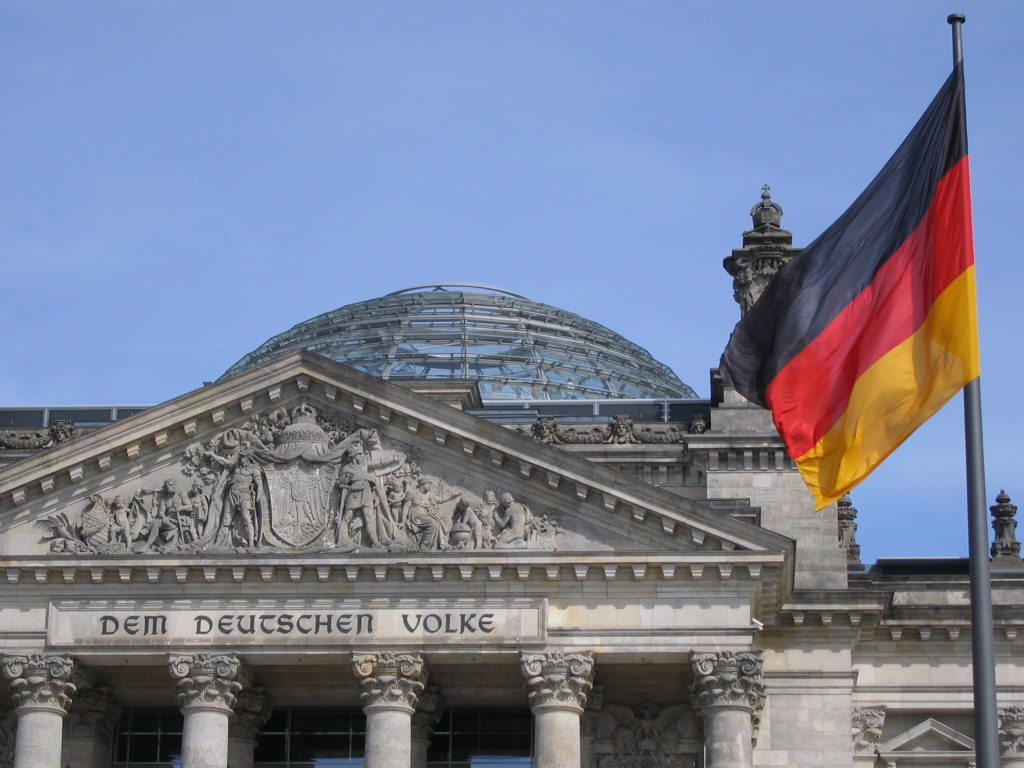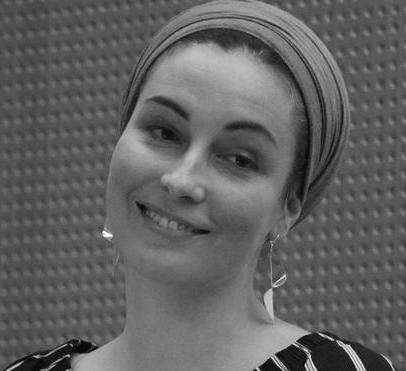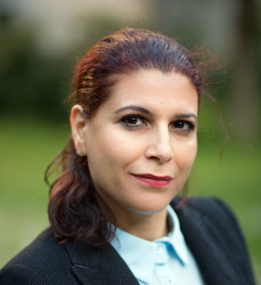
The Moral Triangle’s vision and motivation are its authors’ shared desire to extend the German state’s responsibility for the Holocaust to the Nakba. Could not, the authors ask, the Nakba be recognized as historically related to the failure of the pre-war project of German nation-building? If the German state’s affirmation of responsibility for the Holocaust implies a normative, moral commitment to support and protect Jews on a collective and individual level, can this commitment be practiced in ways that leads neither to a relativization of the Holocaust nor to a denial of Palestinians’ political rights in and beyond Germany? In asking this question, The Moral Triangle may be situated in the broader context of current efforts that demand liberal democracies recognize the persistent legacies of colonialism and racism. Underlying these efforts is a hope: Could not a more pluralist understanding of injustice enable a present and future less prone to rising nationalisms, political violence, and populist, racist agitation?
We concur that the hope for an extension of the memory and responsibility paradigm that developed in Germany with the institutionalization of the memory of the Holocaust may, indeed, lead to a recognition of more forms of violence and more historical victims. For example, it is through reference to the memory of the Holocaust that the claim for a recognition of its “other victims” gradually emerges. Yet, in this response we suggest that, contrary to Atshan and Galor, the desired pluralization of victims does not necessarily lead to political pluralization, but perpetually inscribes the figure of the Jew as potential victim and the figure of the Palestinian as potential perpetrator. We suggest that, when implemented in the German context, the project of pluralization is bound to and determined by the German state’s desire to reconstitute itself as a liberal, democratic, and above all, anti-anti-Semitic polity. This reconstitution, however, has illiberal and violent consequences. It creates the need for a “new anti-Semite” against which Germany can re-invent itself as a protector of Jews, as well as the need to conceive of Jews as precarious “bare life.” The figure of the Jew does not stand in for religious difference and its recognition and protection, but is an empty foil that enables a German moral conversion from anti-Semitism to anti-anti-Semitism. When many Jews then relegate their political collective subjecthood to the Israeli nation state, Palestinians’ resistance to the latter is viewed through a German lens and reads as anti-Semitism. Consequently, the various forms of state violence committed against Palestinians are denied or met with indifference by large parts of the German public.
…the desired pluralization of victims does not necessarily lead to political pluralization, but perpetually inscribes the figure of the Jew as potential victim and the figure of the Palestinian as potential perpetrator.
The city of Berlin is the site of Atshan and Galor’s ethnographic study. It is a place framed by the authors as a promising site at which the desire for an extension of moral responsibility could materialize: “Berlin is now known for its cosmopolitanism (in some ways reminiscent of pre-World War II Weimar culture); its critical engagements with the Holocaust; its grappling with issues of justice, immigration, social difference, and integration; its robust public discourse on moral responsibility; its vast cultural sphere; the massive refugee migration of 2015; and the rise of the far-right, populist and intolerant Alternative for Germany (Alternative für Deutschland; AfD) party” (5). As readers living in Berlin, such expressions of hope, of course, sound familiar to us: the multilayered branding of the new capital as “the most non-German German city”—the fostering of an image pointing towards a multicultural, liberal, non-nationalist European future—has been successful. Yet, as becomes abundantly clear from Atshan and Galor’s interviews, German conversations about “things Jewish”—from the Holocaust to Israel and Palestine to anti-Semitism and racism—are for some wrapped in fear of “civil death,” and for others in calculated or naïve innocence. Indeed, from among the “world champions of memory” (“Erinnerungsweltmeister”), as Germany’s memory culture is often referred to, only a handful of those who doubt Germany’s “memory success,” dared to be identified by name. It seems that beneath a carefully guarded, sanitized public layer of speech and performance of memory lies a tenuous, anxious, and fearful thickness. Let us, in the following, zoom into some aspects of this thickness.
Within the specific context of post-1989 Germany, Israelis are framed and addressed primarily as Jews. This seemingly banal fact matters because one of the central functions of German memory culture is to facilitate German inter/national rehabilitation and democratic, collective self-assurance. Seeking to demonstrate its stable and full belonging to the realm of “civilized nations,” the “new” German state institutionalized the memory of the Holocaust as its (post-) national, collective foundation. Especially after 1989, a shift in the reunited German state’s relation to the figure of the Jew is discernible: from now on, Jews are increasingly addressed no longer exclusively as survivors/witnesses from the past, but as living, flourishing, and active carriers of “Jewish life.” Israelis here function as embodiments of Jewish life, the “value” of which cannot be detached from the project of post-genocidal nation building and collective, anti-anti-Semitic self-assertion: “New Germany” became an identifiable nation, as well as a nation one can identify with, through a shift from a world in which the German state remembered its killed Jews to a world in which it actively protected living Jews globally, Israelis among them. In the exhibition “Berlin Global” of the Humboldt Forum, for example, visitors can watch a video-installation, in which, among others, a Jewish Israeli woman recounts how her grandparents fled from Berlin, and how, through her return to the city, a “circle is being closed” and the “sharp cut” is being healed. While the move from Israel to Berlin may, of course, be felt and personally referred to as a return, we suggest that the primary and ulterior importance and meaning of “Jewish life” here lies exclusively in its conceptualization as an answer to the Holocaust. It is part of a progressively evolving timeline that leads from Jews’ murder in the past to their revival/return in the present, and therewith, from German perpetration of atrocities against the Jews to German “guardianship” of Jews. “Jewish life” here has no significance beyond this—the protection of Jewish life does not entail, for example, any broader, normative recognition of religious practices of minorities (including Muslim religious practice) but is understood and globally marketed as a “sign against anti-Semitism.”
We suggest that this dynamic paradoxically necessitates ongoing Jewish precariousness: For it is Jewish vulnerability now that gives the guardians, supporters, and promoters of “Jewish life” the chance to experience the present as a new era—an era in which Germany can be marketed as having completed a collective moral conversion from genocidal, excessive nationalism, to liberal, democratic, and difference-embracing cosmopolitanism. The birth of a morally “improved” German collective, made of citizens who have “learned their lesson” and now wish to protect what their ancestors failed to protect earlier, necessitates not only the memory of the Holocaust to remain in vivid proximity, but also requires a sense of perpetual vulnerability of Jews in the present and future. By this we do by no means imply that Jews and Jewish communities in Germany are not de facto vulnerable. But we do suggest that such vulnerability—both as concrete reality and discursive trope—functions also as a necessary foil upon which German moral regeneration emerges.

This latter dynamic is complicated by the fact that especially in a German, post-unification context, the figure of the Jew became a desired figure that promised both an exit from national(ist) Germanness and a post-national, post-racial German future. The figure of the Jew was made to stand in for everything the Nazi state was not. Summoning democratic and liberal sensibilities, it thus became an icon of a post-national European future that was imagined to share one and the same moral space with the ideal, democratic German citizen. When the Jew’s body is depicted as vulnerable and precarious, yet bristling with life and resilience, it functions as a universalizable “stand-in” for the body of the new, democratic political collective that is endangered by the same forces as, allegedly, Jews—such as, for example, new antisemitism, extremism from the right and left, or political Islam. The figure of the Jew thus is a figure, the visibility and legibility of which is rigorously produced and maintained, because in recognizing Jewishness, Germany recognizes itself. Seventy years after the Nazi genocide, the desire for visible “Jewish life” permeates the German political present and unites a broad coalition of politicians, community activists, and engaged citizens, with “Jewish life” functioning as an umbrella under which different rationalities can be harmoniously joined. For example, the (re-)construction of a synagogue can be supported by some politicians as a measure motivated by a principled diversity policy, marking the neighborhood as multicultural and tolerant; for others, the synagogue makes “Jewish life more visible,” and for yet others it is a measure coupled more tightly to rehabilitation. None of these reasonings make the construction of a synagogue dependent on the actual existence of a Jewish community that would need, and use, said synagogue; yet all of them entail a vision of what Germany is supposed to “look like.” The synagogue here marks German public space as Jewish, and relatedly, a town’s policies and its citizens, as anti-anti-Semitic, liberal and democratic, without requiring protection of any other minoritized group.
In the moral-emotional economy of post-unification Germany, the figure of the Jew was thus made visible and legible as both the “other” and the paradigmatic, exemplary new German. Its appeal, desirability, and attractiveness stem from its being remembered, marketed, and re-enacted as a subaltern, vulnerable “other,” while the precise contents of this otherness remain wholly of a piece with post-unification, majoritarian conceptions of what it means to stand, this time, finally, “on the right side of history.” This is a figure of subalternity that is simultaneously hegemonic, a figure of “disruption” that stabilizes, a figure of transnational cosmopolitanism that defines national belonging.
The birth of a morally “improved” German collective, made of citizens who have “learned their lesson” and now wish to protect what their ancestors failed to protect earlier, necessitates not only the memory of the Holocaust to remain in vivid proximity, but also requires a sense of perpetual vulnerability of Jews in the present and future.
Dominant identification with the figure of the Jew has multiple effects on the project of political pluralization. First of all, a polity that defines itself via a conversion from anti-Semitism to anti-anti-Semitism needs someone else to stand in for everything that Germany today is not: someone has to be the illiberal, undemocratic, and anti-Semitic threat against which the good citizen can define herself as that which she is no longer.
Second, it does not protect Jews and Muslims from the regulation, problematization, and stigmatization of religious practices such as circumcision or ritual slaughter. As is emphasized in this series by Sultan Doughan, in German memory culture the category of race is being allocated to the Nazi past—to the experience of the genocidal state and the workings of “pseudo-science”—and severed from the category “religion.” Pre-war forms of racialization of Jewish minorities can take new shape with regard to Muslims and Jews in Europe today and stick to Muslims’ and Jews’ non-statist communities, illiberal normative orders, and non-secular epistemologies. Dominant identification with the figure of the Jew thus cannot prevent the regulation (and in some cases, the threat of prohibition or criminalization) of the religious practices of minoritized collectives who do not experience themselves exclusively within a moral, affective-political space shaped by the needs of German rehabilitation.
And third, dominant identification with the figure of the Jew impacts Palestinians, with increasingly repressive outcomes. Those who seek to enter the public arena can discuss Palestine on “German terms” only and are marked as subjects that require preemptive monitoring and sanctioning. For the sake of Germany’s reconstitution, Palestinians have to uphold the assumption of the figure of the Jew’s universal, perpetual vulnerability, even when they suffer the consequences of Jewish privilege and power in Israel. The Moral Triangle indeed attests to the difficulty of articulating forms of critique of Israeli state violence that are not (“always already”) marked as anti-Semitic, or at least under suspicion thereof. Yet this difficulty cannot be “smoothed out” through liberal “encounters” in the most “non-German German” city, as The Moral Triangle suggests: As long as the figure of the Jew remains a medium through which German post-unification identity is articulated and experienced, the performance of Jewish collective difference and political agency will be exclusively relegated to the State of Israel. The figure of the Palestinian, as well as Palestinians’ political subjecthood and demands for equality will, in turn, be addressed as either an annoyance to be ignored or a threat to be criminalized—rather than as a crucial prism through which the multiple layers of legitimatized moral violence in Germany have to be recognized.
We would like to thank Patricia Piberger, Sami Khatib, and Elad Lapidot for their helpful comments.
Suggested Readings:
Anonymous. 2020. “Palestine Between German Memory Politics and (De-)Colonial Thought.” Journal of Genocide Research 23(3): 1-9.
Barskanmaz, Cengiz, 2019. Recht und Rassismus. Das menschenrechtliche Verbot der Diskrimimierung aufgrund der Rasse. Springer.
Chaumont, Jean-Michel. 2001. Die Konkurrenz der Opfer. Genozid, Identität und Anerkennung. Lüneburg: zu Klampen Verlag.
El-Bulbeisi, Sarah. 2020. Tabu, Trauma und Identität. Subjektkonstruktionen von PalästinenserInnen in Deutschland und der Schweiz, 1960-2015. Bielefeld: transcript Verlag.
Jureit, Ulrike and Christian Schneider. 2010. Gefühlte Opfer: Illusionen der Vergangenheitsbewältigung. Stuttgart: Klett-Cotta Verlag.
Khatib, Sami R. 2022. “Germany and Its Palestinian Discontents.” Journal of Visual Culture 20(2): 238-241.
Lapidot, Elad. 2020. Jews Out of the Question. A Critique of Anti-Anti-Semitism. State University of New York Press (SUNY).
Meister, Robert. 2010. After Evil: A Politics of Human Rights. New York: Columbia University Press.
Moses, A. Dirk. 2007. “The Non-German German and the German German: Dilemmas of Identity after the Holocaust.” New German Critique 101 (Summer): 45-94.
Qasem, Sindyan. 2020. “Little more than terrorists”: Eine Reflexion über das Verhältnis von Islamismusprävention und Palästinadiskurs, Jahrbuch für Islamophobieforschung: 71-90.
Tzuberi, Hannah. 2020. “ ‘Reforesting’ Jews: The German State and the Construction of ‘New German Judaism’,” Jewish Studies Quarterly 27/3: 199-224.
Pisanty, Valentina. 2021. Guardians of Memory and the Return of the Xenophobic Right. Translated by Alaistar McEwan. New York: Centro Primo Levi New York.


